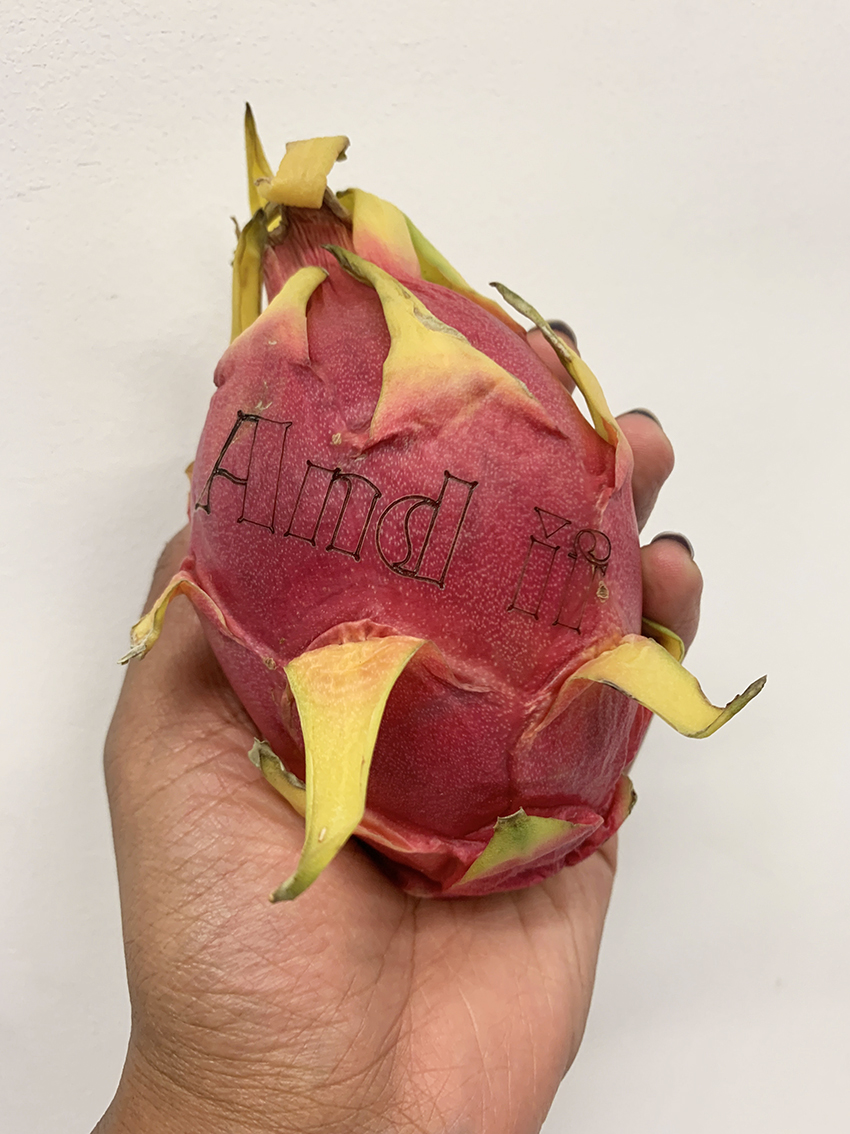
• English version
• Guide de visite
• Press room
• Poems
• Art Basel Event: Talk with Emilie Notéris

|

Gaëlle CHOISNE, Eat me (softly), 2021. Poem by Audre Lorde laser-engraved on 36 fruits (depending on arrival, season and location). Protocol variable dimensions. Unique. |
|
loading…
|
|
LE CRI DE PLAISIR LE MOINS MOUILLÉ DU MONDE
|
Une série de petits dessins à l’acrylique, rehaussés de pastels et crayons de couleur, est suspendue dans l’espace. Comme un herbier, ou plutôt une multitude de carrés de jardins créoles, territoire gagné sur celui des maîtres. Leur nature est trompeuse, si l’on se fie uniquement à la luxuriance de la végétation représentée (toucan encagé, rose de damas, oiseaux de paradis, orchidées…). D’autres images s’insèrent dans ce paysage tropical, une manifestation contre les violences policières organisée par Assa Traoré à Paris, une archive du Pussy Palace, club LGBT londonien pour personnes racisées. Présentés dans des cadres grillagés métalliques, agrémentés de grigris, de parfum et d’inserts de pièces de monnaie, elles dépassent le caractère exotique des motifs représentés. En écho avec une génération d’autrices caribéennes qui se sont élevées contre la représentation exotisée des femmes racisées, contre la « poésie doudou » ou la « littérature de hamac », les sœurs Nardal et Suzanne Césaire. Aurions-nous le courage de nous dépouiller du prestige que nous confère la littérature exotique et de détonner, modernes, sur le décor passé, rococo des hamacs, palmiers, forêts vierges etc demandait Jane Nardal dans son texte « Pantins exotiques » (La Dépêche africaine, 15 octobre, 1928). Gaëlle Choisne détonne, dans le sens d’un décalage tonal ou du démantèlement de vocabulaire. |
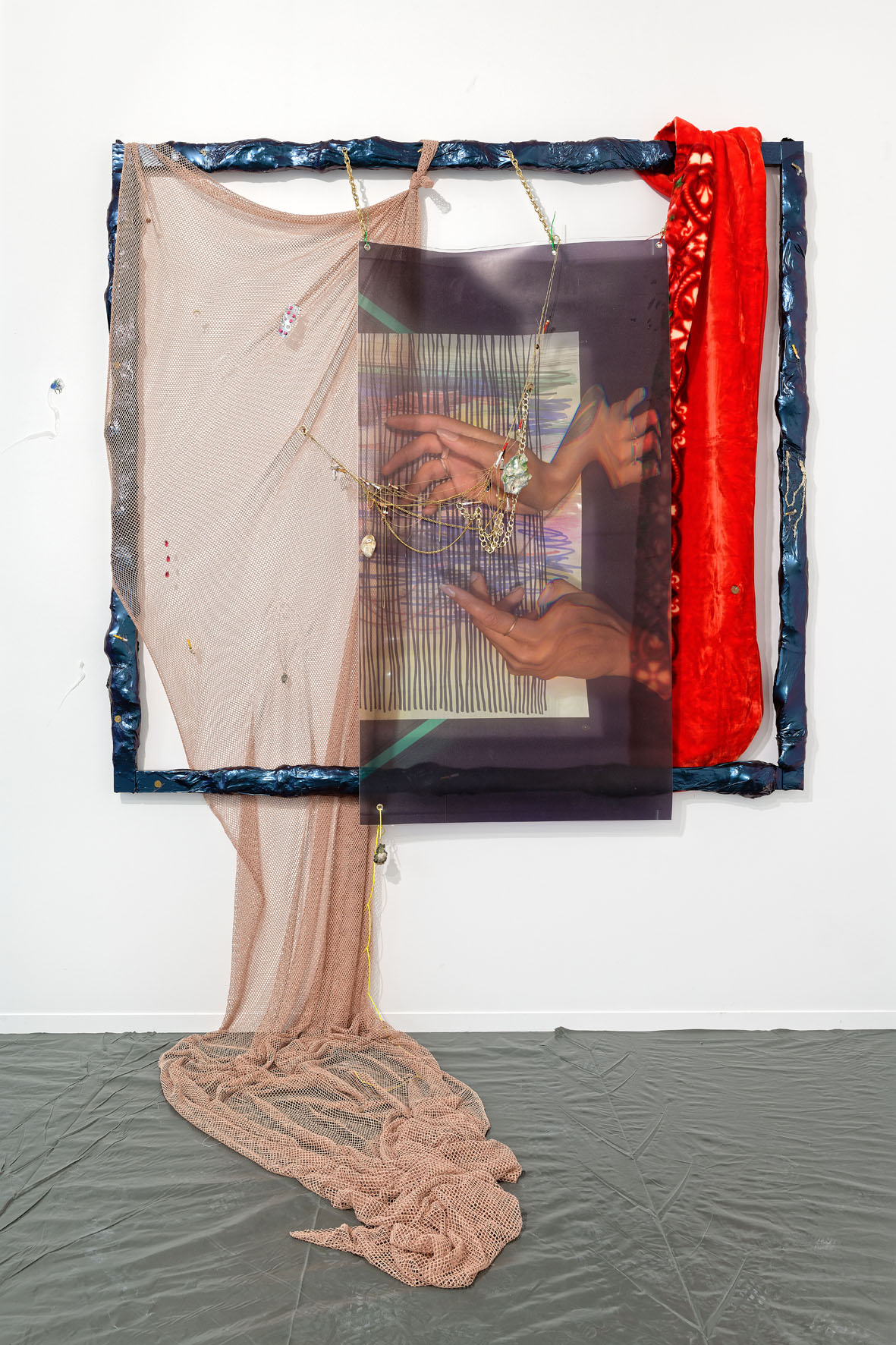
Gaëlle Choisne, If My hands say something (Psychological problems due to a lack of heritage), 2019. Wood, plaster covering, fabric, red Korean blanket, chameleon covering, felt pen drawing, printed plastic, cigarette butts, coins, medicine. Ca 215 x 210 cm. Unique. |
|
THE WORLD'S LEAST MOISTENED CRY OF PLEASURE 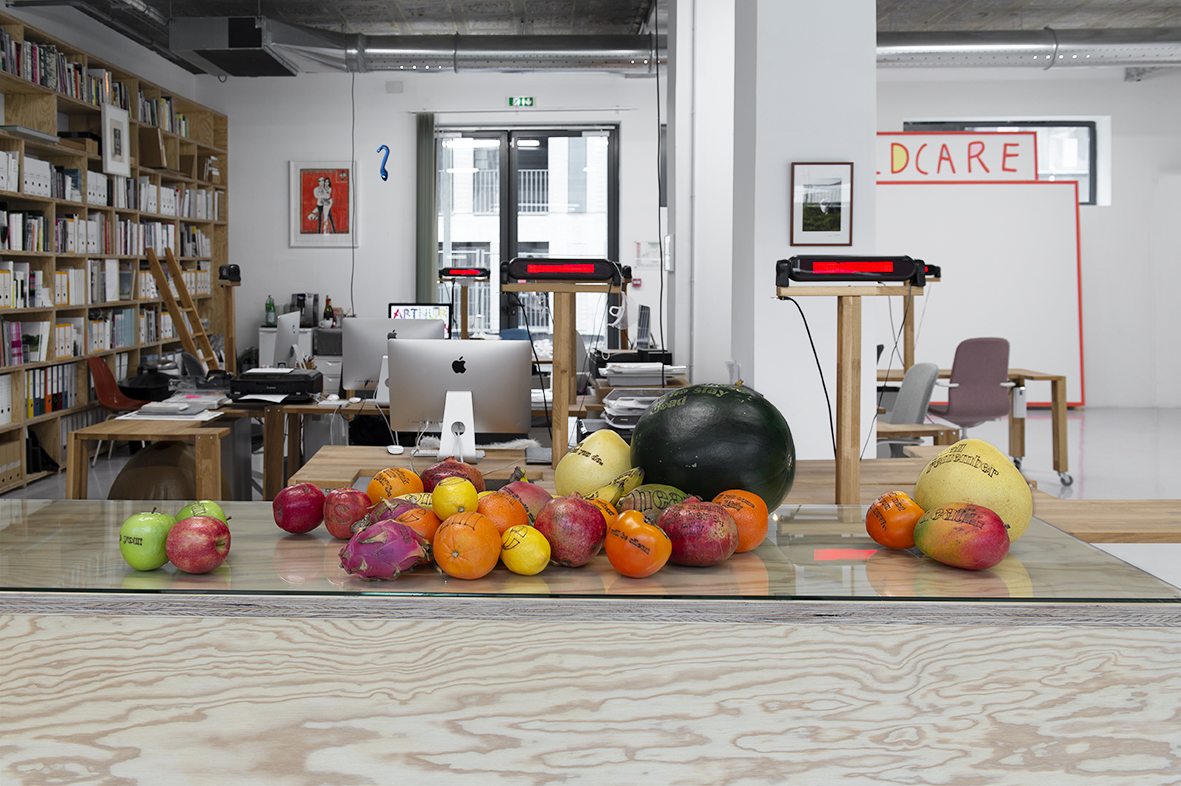
Gaëlle Choisne, Eat me (softly), 2021. Poem by Audre Lorde laser-engraved on 36 fruits (depending on arrival, season and location). Protocol variable dimensions. Unique. |
The dry crackle of their language is etched into the nacreous shells, which in turn gather in the words of Maya Angelou. Gaëlle Choisne weaves her constellations, creates intimate starting points by cannibalising in the present the microhistories of the past.
A series of small acrylic drawings, retouched with pastel and coloured pencils, is suspended in space. Like a herbarium or, rather, a multitude of Creole garden patches, territory won back from the masters. Their character is deceptive if we rely solely on the luxuriance of the what is depicted: a caged toucan, damask roses, birds of paradise, orchids. Other images are slipped into this tropical landscape: a demonstration against police violence, organised by Assa Traoré in Paris, and background from the Pussy Palace, an LGBT club for racialised people in London. Presented in wire grid frames and embellished with grigris, perfume and coin inserts, they transcend the exoticism of their subjects. Echoing a generation of Caribbean women writers who have spoken out against the exoticised representation of racialised women, against "doudou poetry" and "hammock lit", like the Nardal sisters and Suzanne Césaire. As Jane Nardal asked in her article "Pantins exotiques" ("Exotic Puppets", La Dépêche africaine, 15 October, 1928), "Shall we have the courage to divest ourselves of the prestige the literature of exoticism confers upon us and, as modernists, to clash with the past, rococo decor of hammocks, palm trees, virgin forest, etc.?" Gaëlle Choisne stands out, in the sense of a tonal shift or the dismantling of vocabulary. |

Gaëlle Choisne, Les mondes subtils : Weed, 2020. 88 x 37 x 4 cm. Unique. 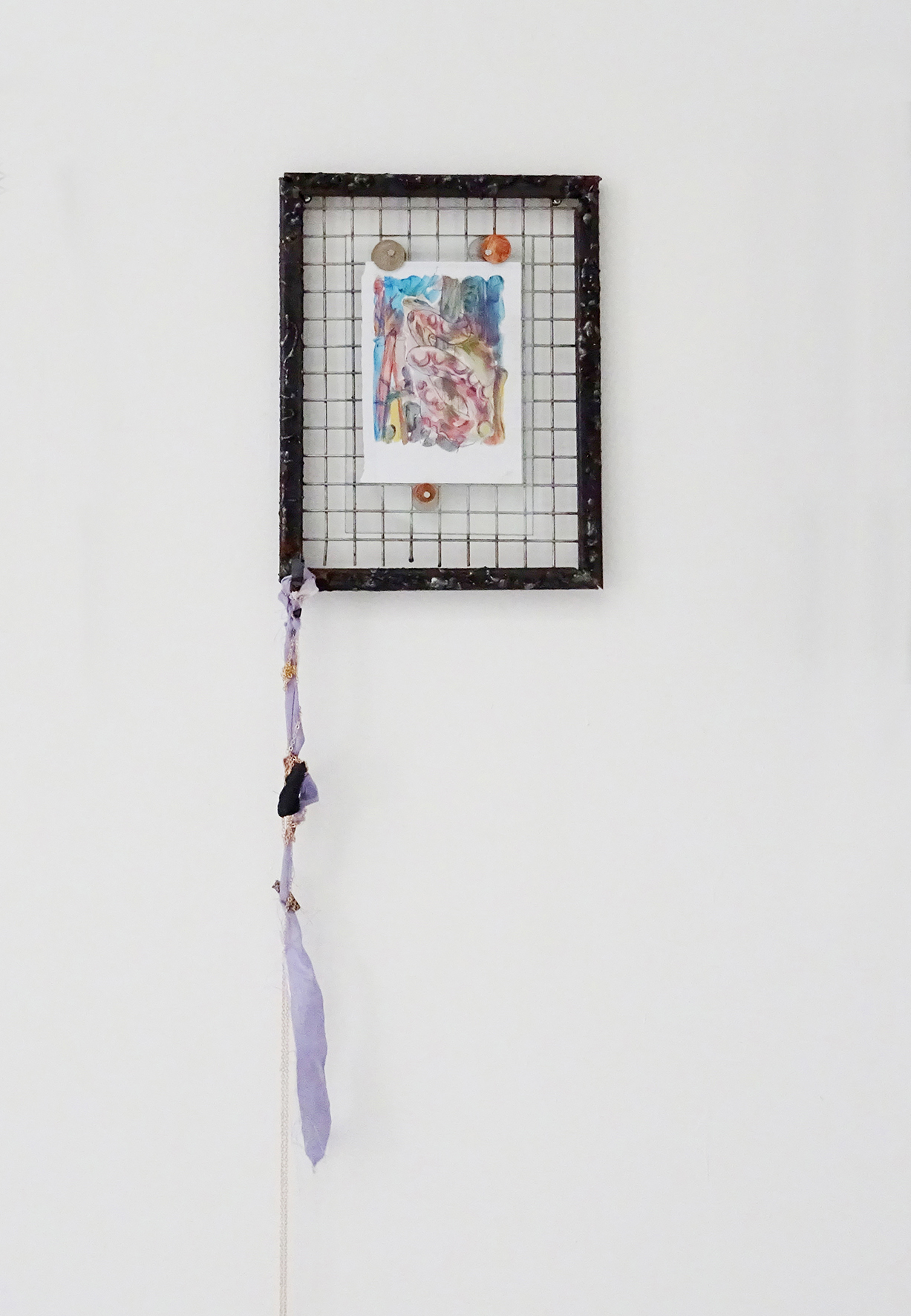
Gaëlle Choisne, Les mondes subtils : My dear baby snake. 37 x 28 x 6 cm. Unique. |
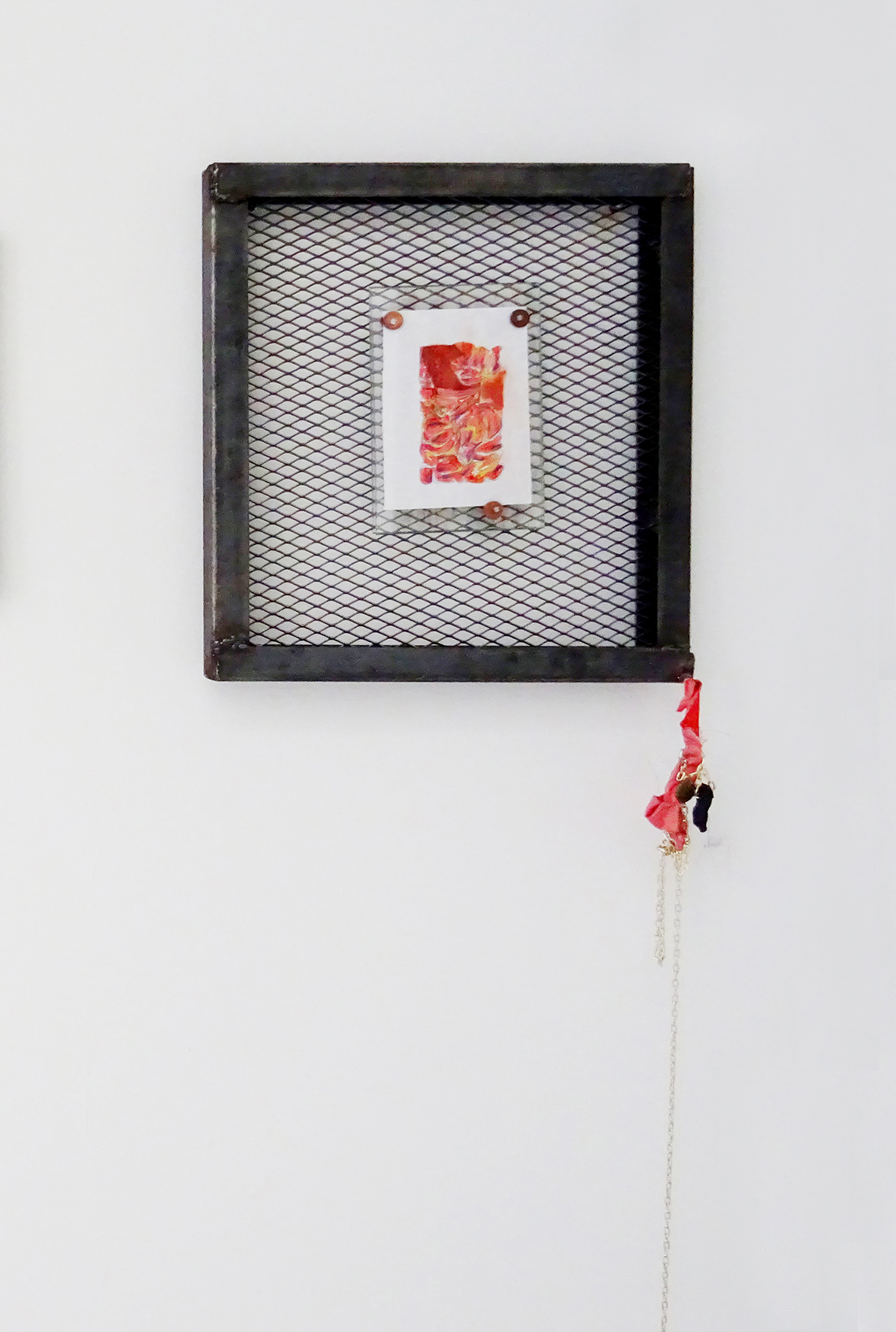
Gaëlle Choisne, Les mondes subtils : Queer. 51 x 46 x 6 cm. Unique. |

Gaëlle Choisne,If My hands say something (Slavery and other adventures), 2019. Wood, plaster, chameleon covering, fabrics, green Korean blanket, felt pen drawing, printed plastic, cigarette butts, coins. Ca 215 x 210 cm. Unique. |
|
|
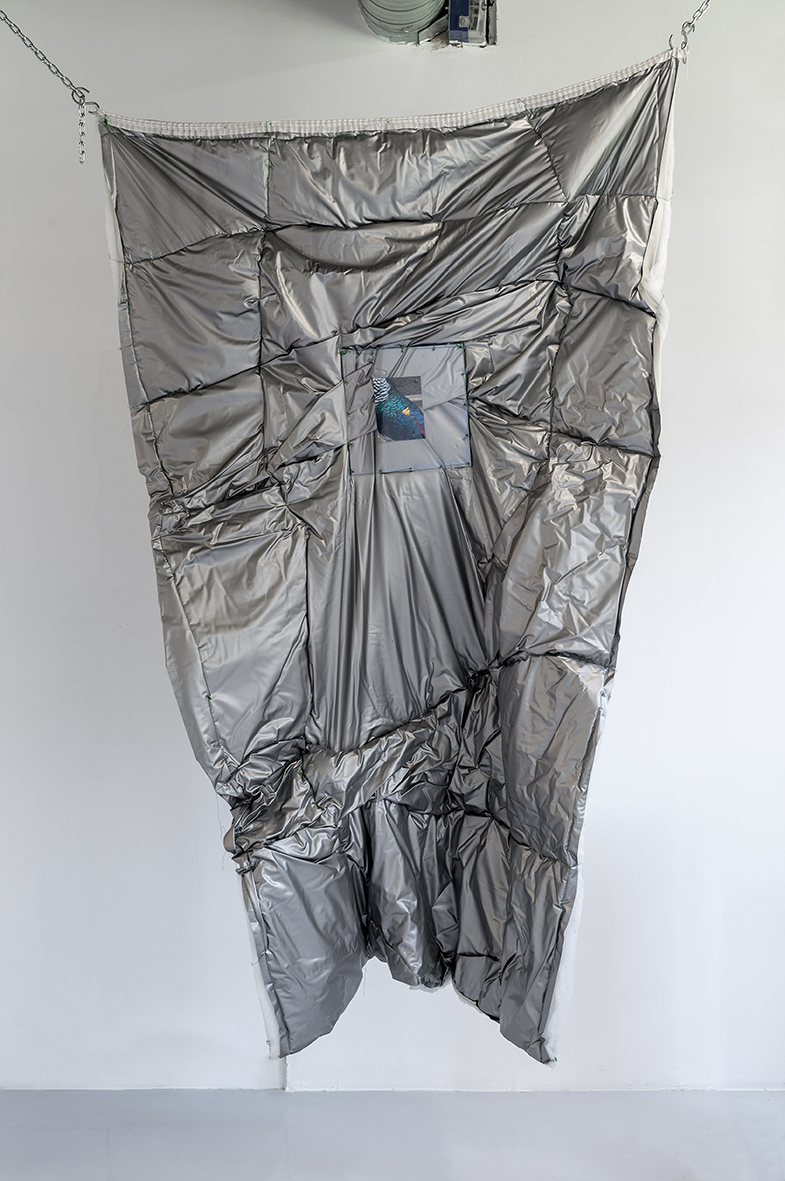
Gaëlle Choisne, Hybris Door, 2017. Plastic cover, color photograph, plexiglas and golden thread, 250 x 120 cm. Unique. © Marc Domage. |
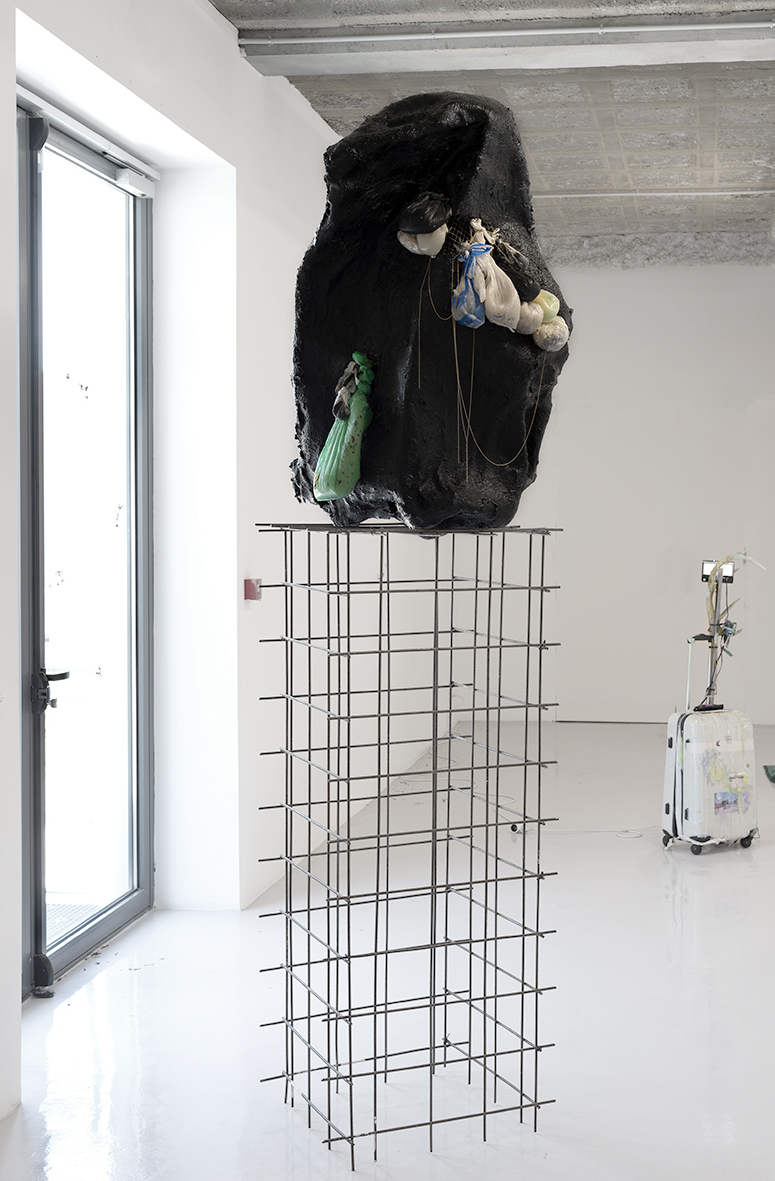
Gaëlle Choisne, Do you like my black ass or the black Aertemis d'Epheus, 2018. Epoxy resin, plastic bags, acrylic resin, wax, various materials, iron structure. Sculpture 110 x 65 x 55 cm. Unique. © Marc Domage. |
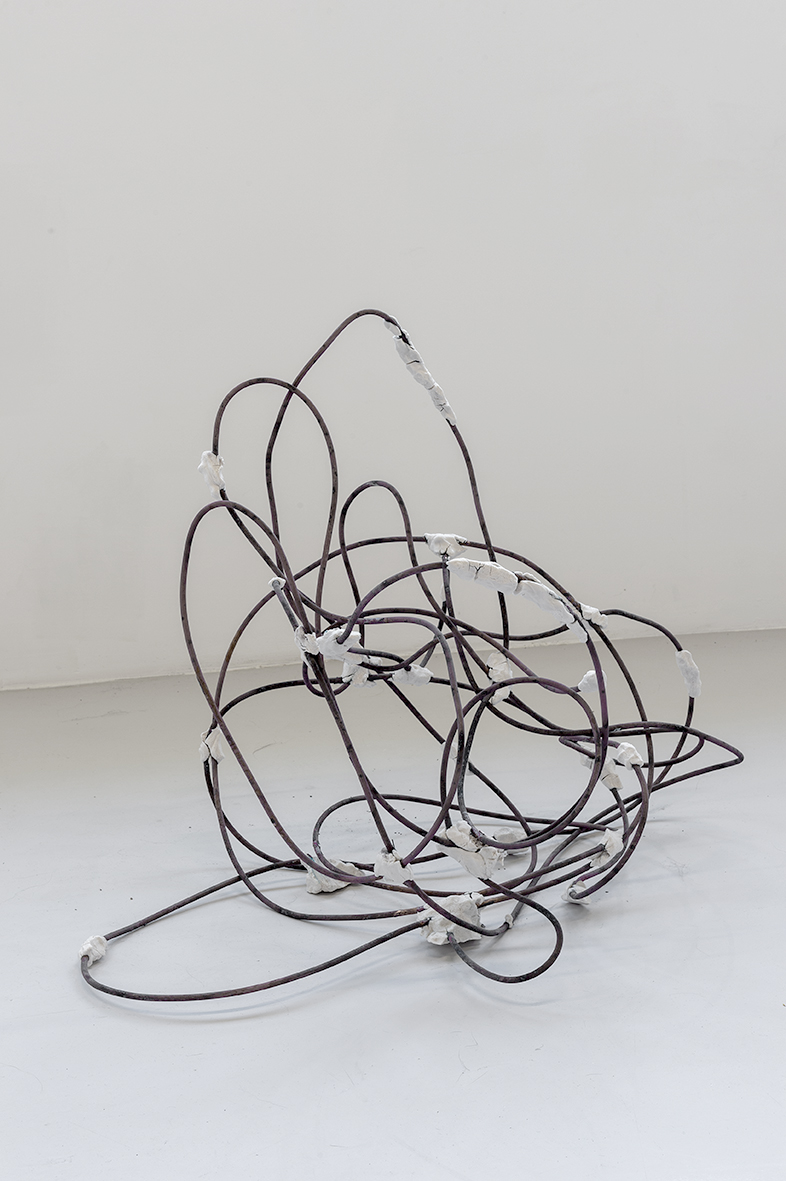
Gaëlle Choisne, Quantique du coeur, 2018. Copper and porcelain, 80 x 70 x 90 cm. Unique. © Marc Domage. |
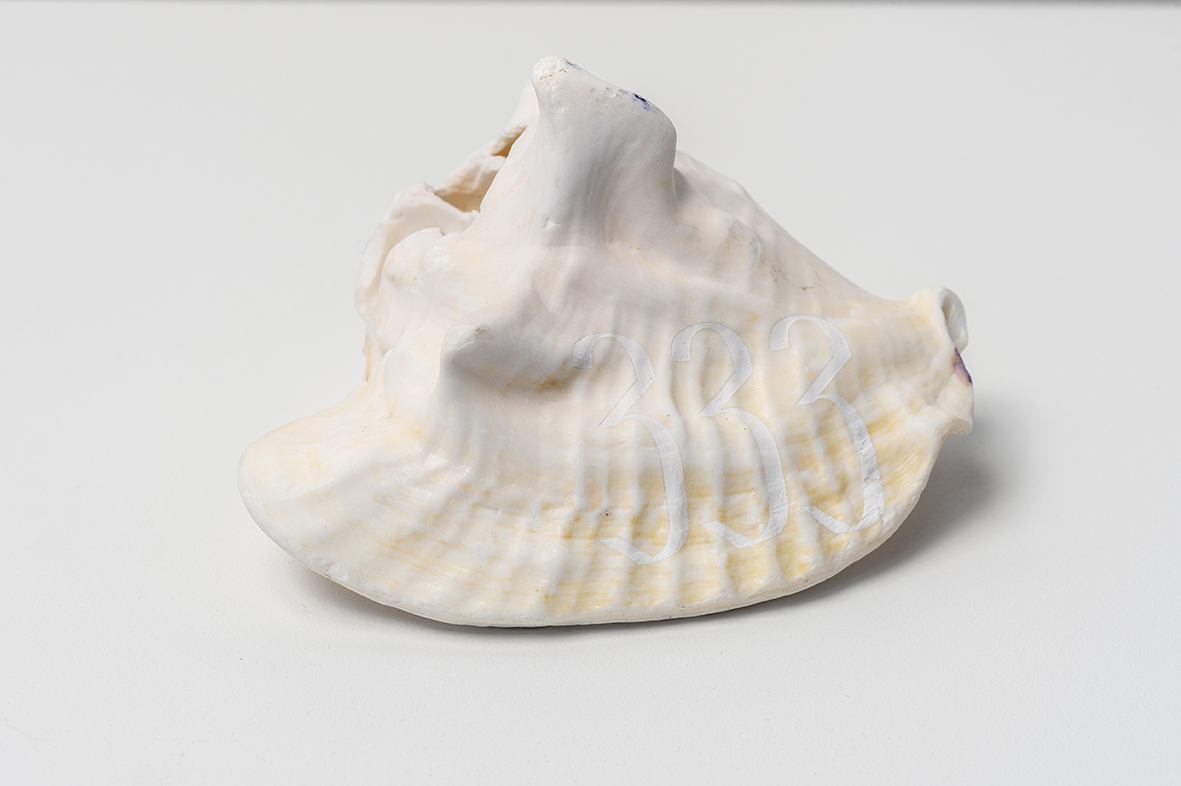
Gaëlle Choisne, 333, 2021. Laser engraving on shell, 10 x 13 x 11 cm. Unique. © Marc Domage. 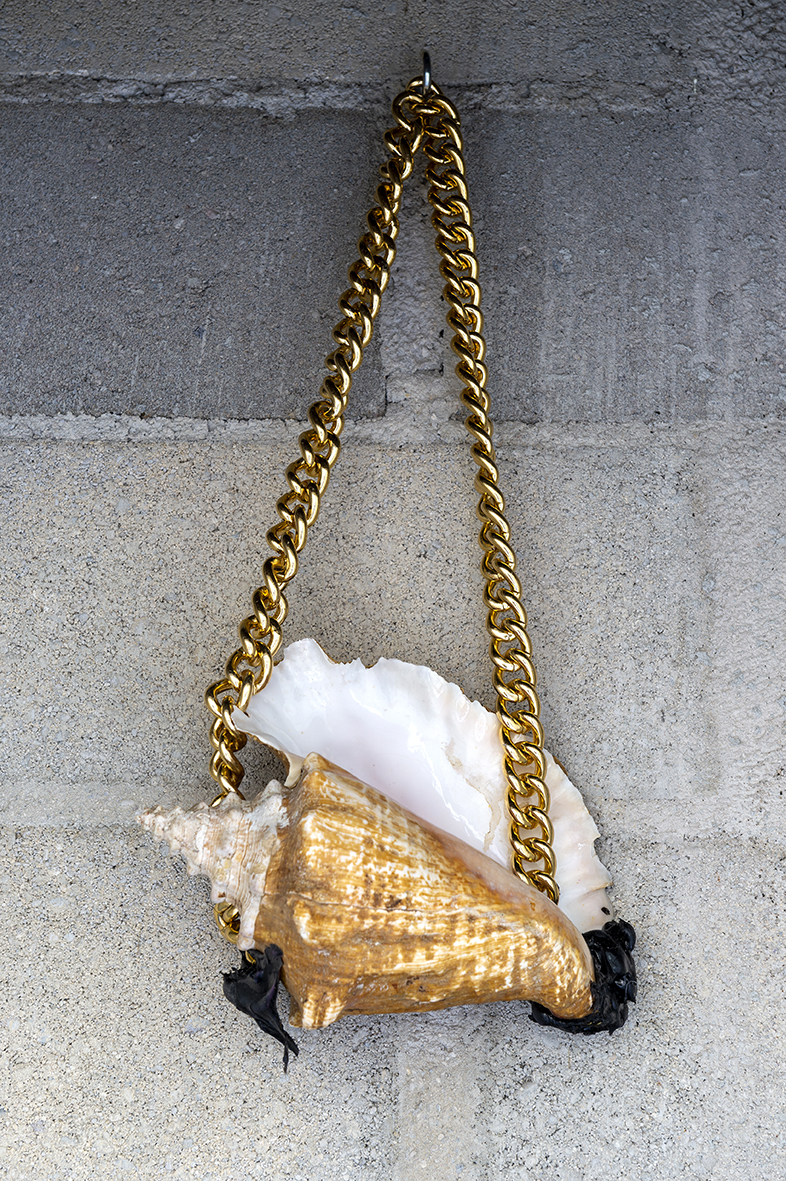
Gaëlle Choisne, Conquête et carnaval (bag lady), 2021. Chain, conch found in Haïti (after prior request), black silicone, overall dimensions 50 x 23 x 15 cm. Unique. © Marc Domage. |
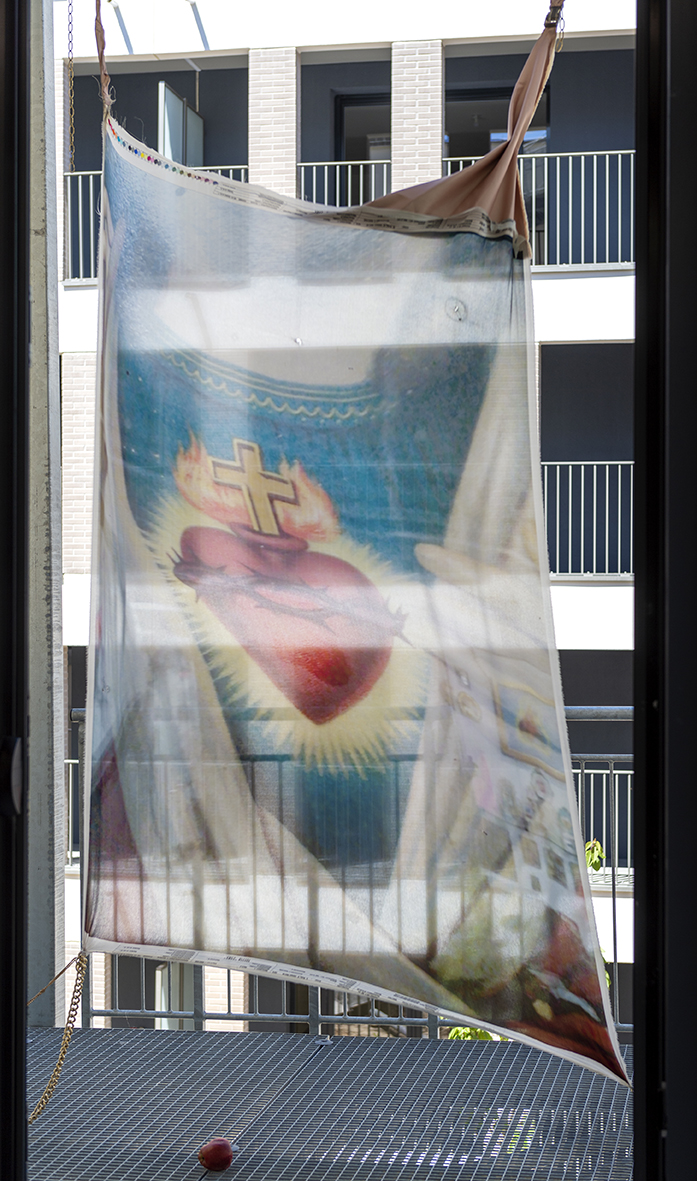
Gaëlle Choisne, Ab joi, 2021. Printed fabric, fabrics, webbing, cotton and nylon threads, chains, wind, overall dimensions ca. 220 x 160 cm (+ chains). Unique. © Marc Domage. |
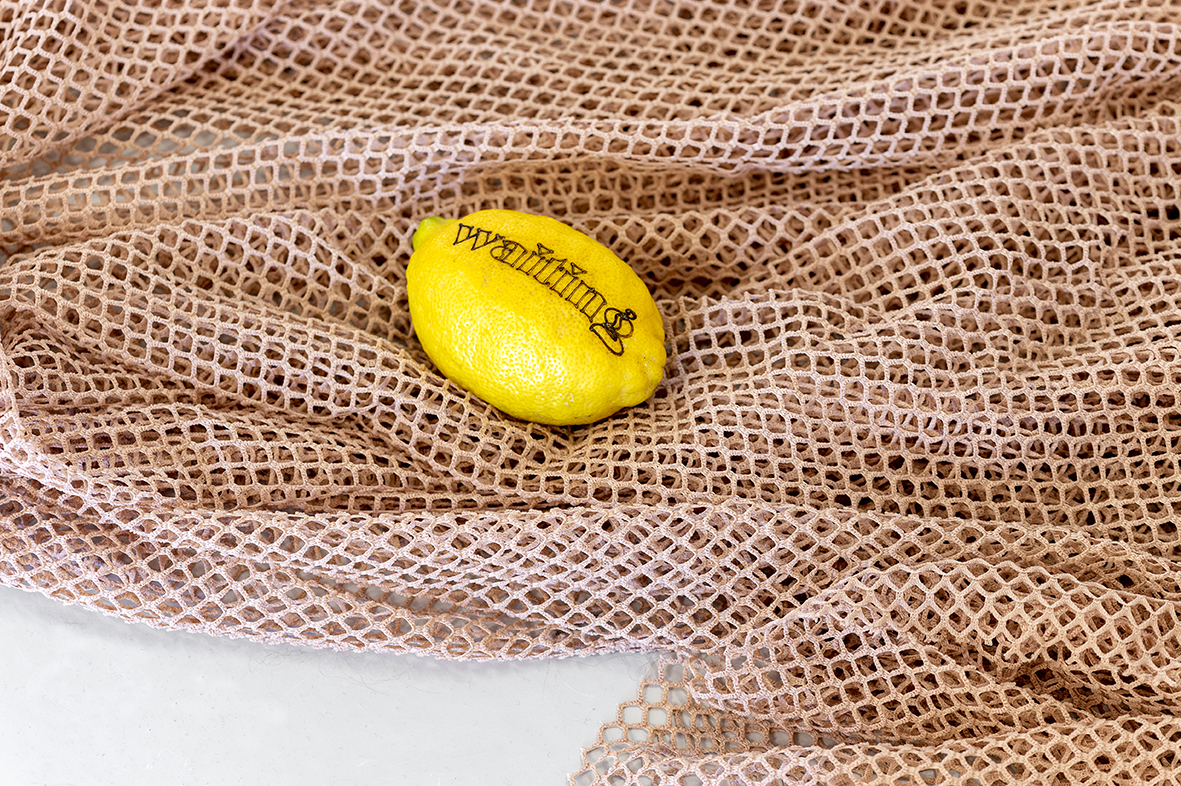
Gaëlle Choisne, Eat me softly (recreation), 2021. Poem by Audre Lorde laser-engraved on approx. 30 fruits (depending on arrival, season and location). Protocol. Variable dimensions. Unique. © Marc Domage. 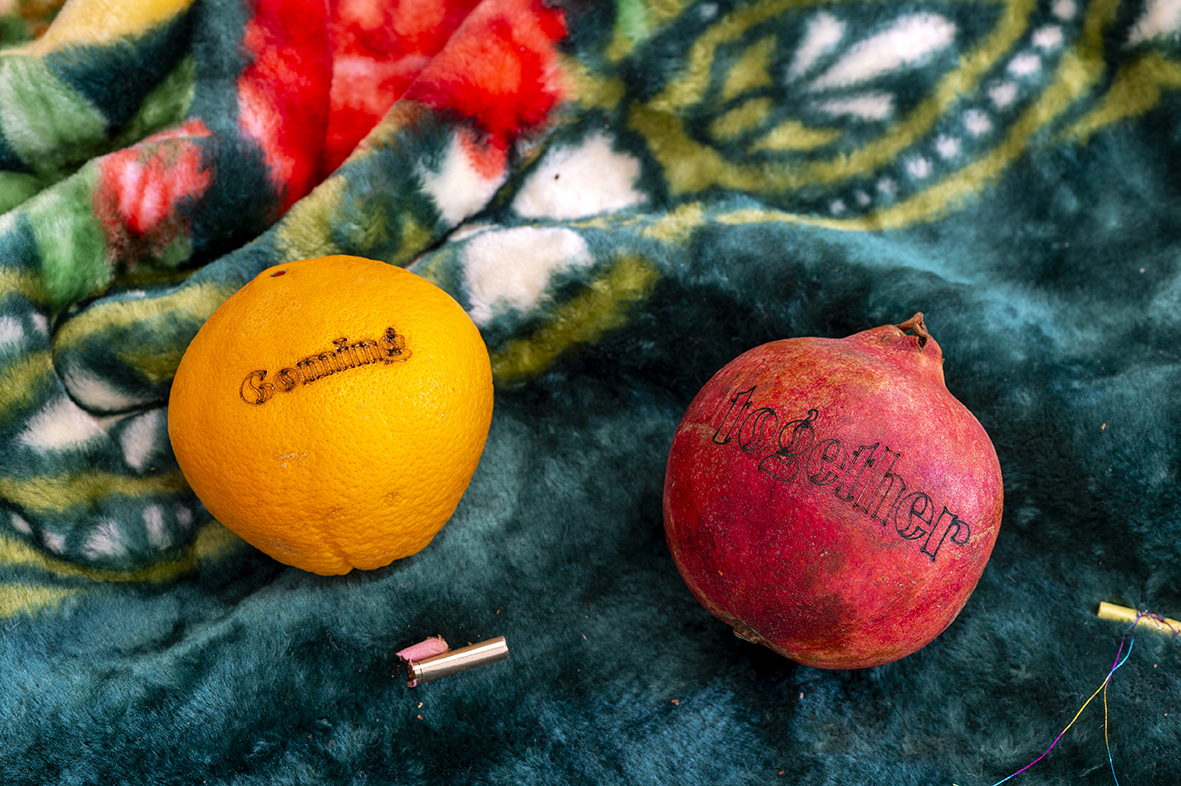
Gaëlle Choisne, Eat me softly (recreation), 2021. Poem by Audre Lorde laser-engraved on approx. 30 fruits (depending on arrival, season and location). Protocol. Variable dimensions. Unique. © Marc Domage. |
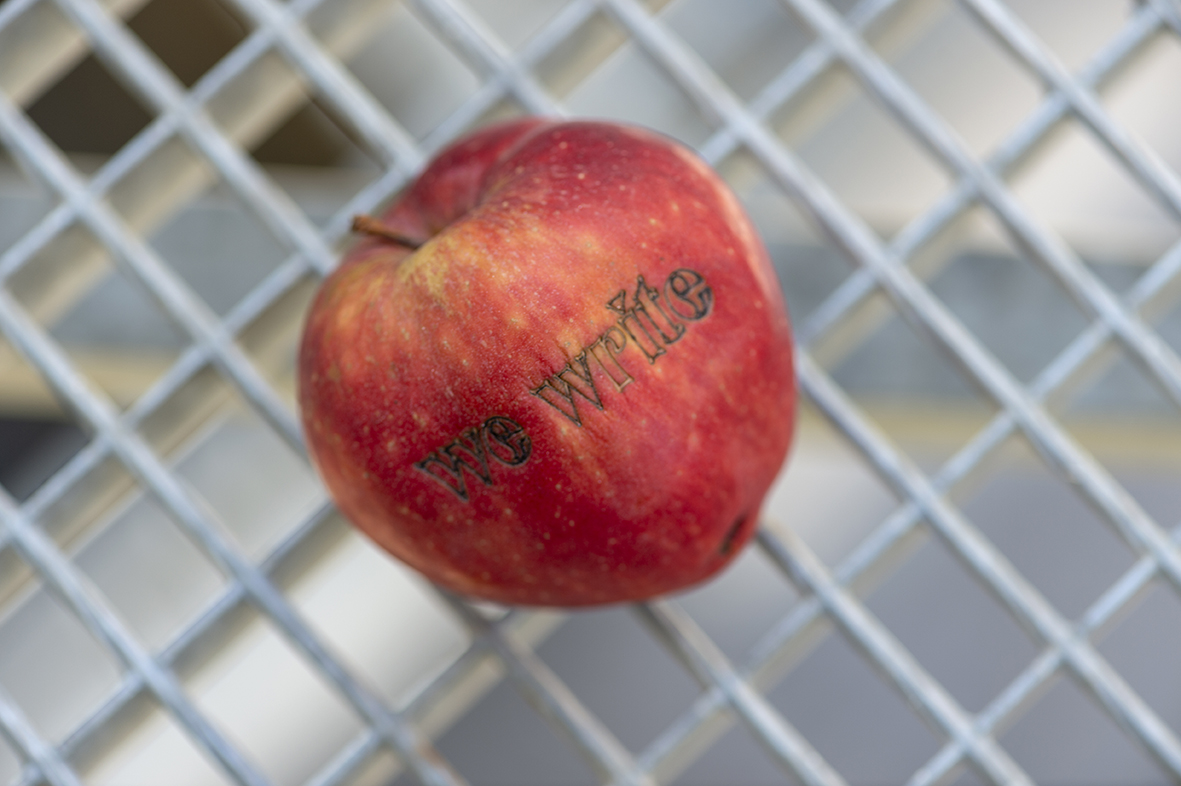
Gaëlle Choisne, Eat me softly (recreation), 2021. Poem by Audre Lorde laser-engraved on approx. 30 fruits (depending on arrival, season and location). Protocol. Variable dimensions. Unique. © Marc Domage. 
Gaëlle Choisne, Eat me softly (recreation), 2021. Poem by Audre Lorde laser-engraved on approx. 30 fruits (depending on arrival, season and location). Protocol. Variable dimensions. Unique. © Marc Domage. |
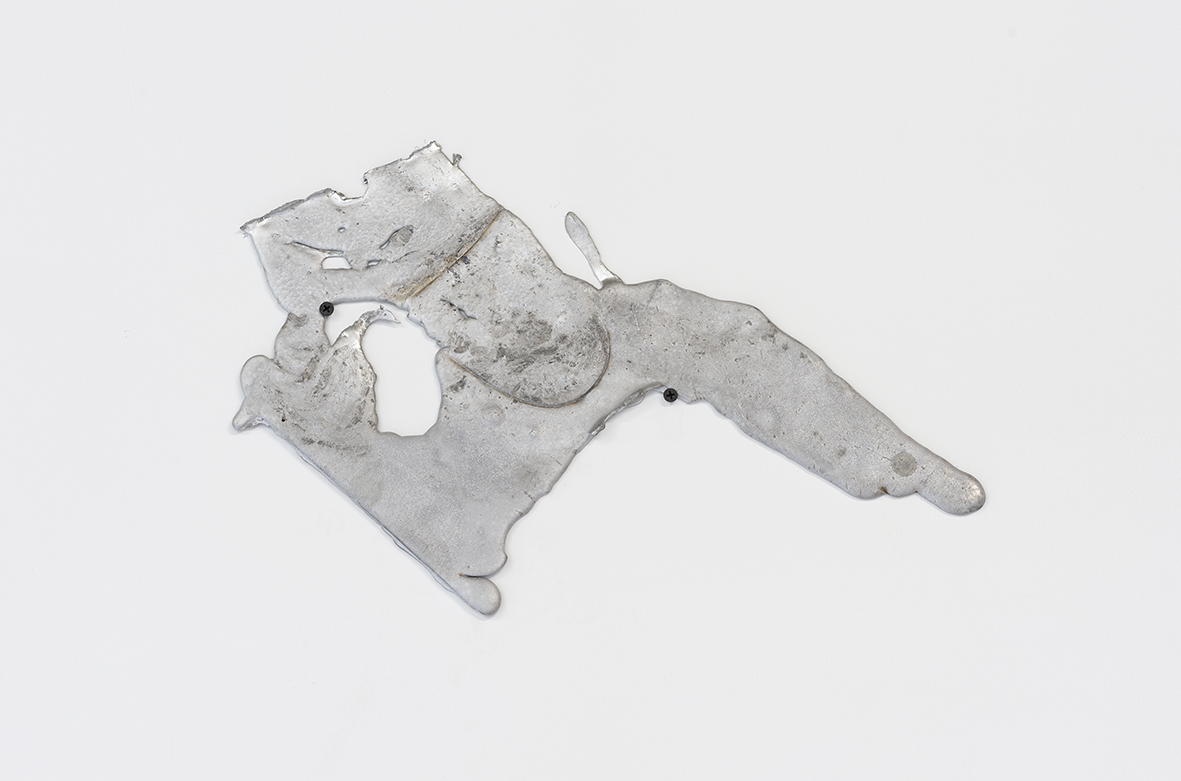
Gaëlle Choisne, Scorie memory, 2021. Lead, 29 x 40 cm. Unique. © Marc Domage. |
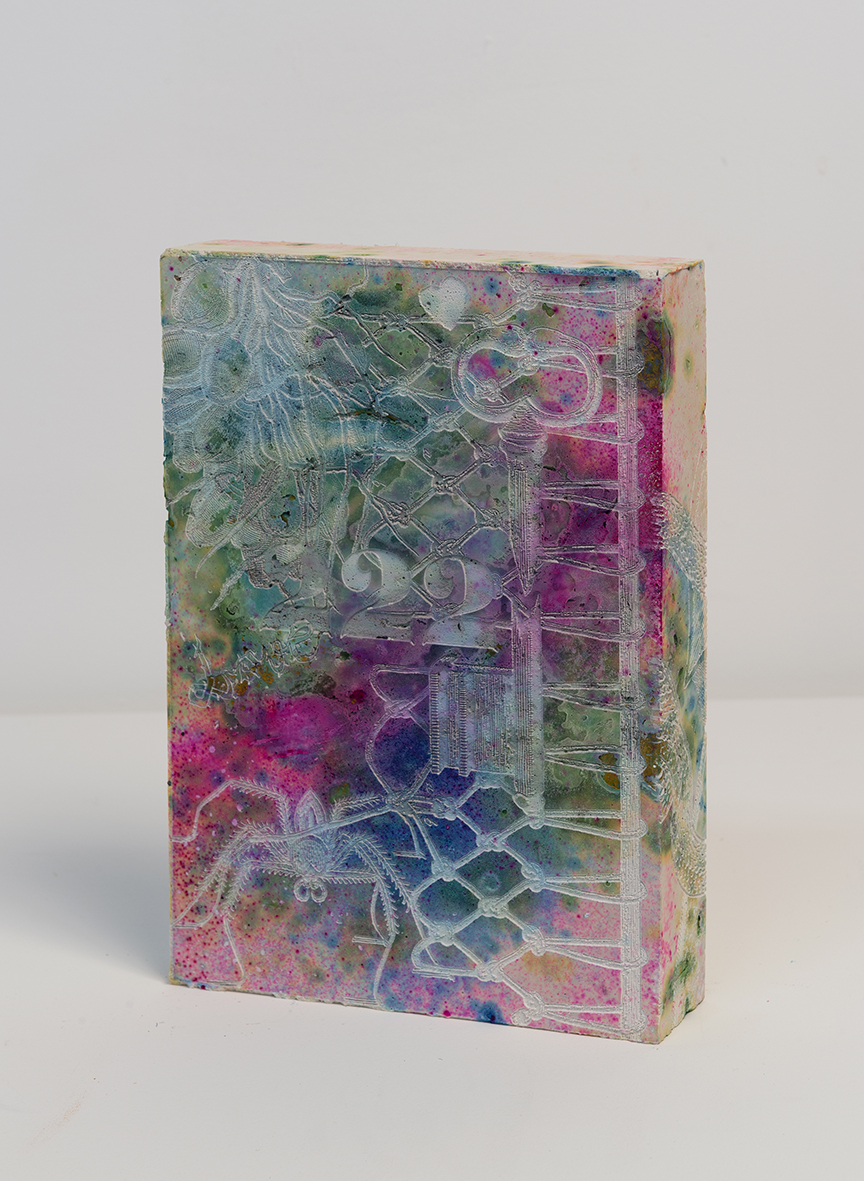
Gaëlle Choisne, Les mémoires akashiques 222, 2021. Résine acrylique (friendly for the earth), pigments alimentaires, gravure laser, 25 x 17 cm. Unique. © Marc Domage. |
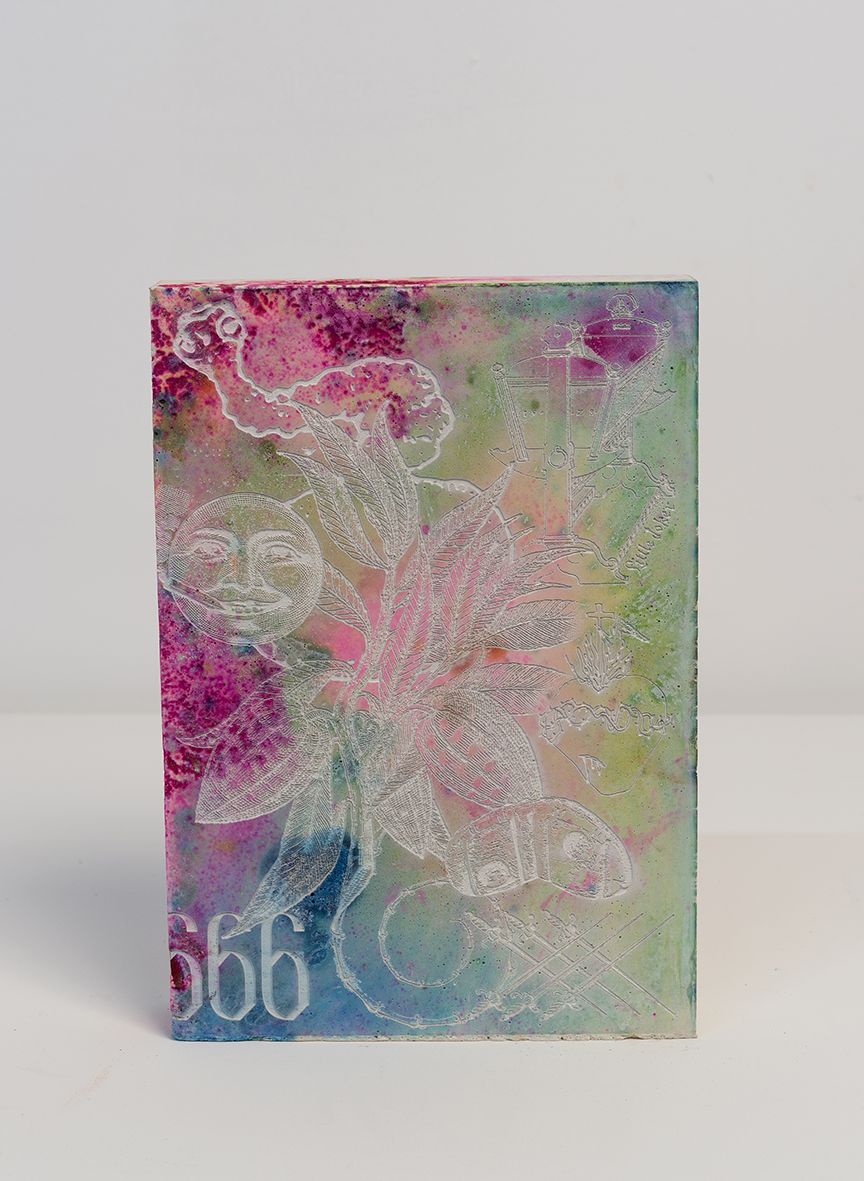
Gaëlle Choisne, Les mémoires akashiques 666, 2021. Résine acrylique (friendly for the earth), pigments alimentaires, gravure laser, 25 x 17 cm. Unique. © Marc Domage. |
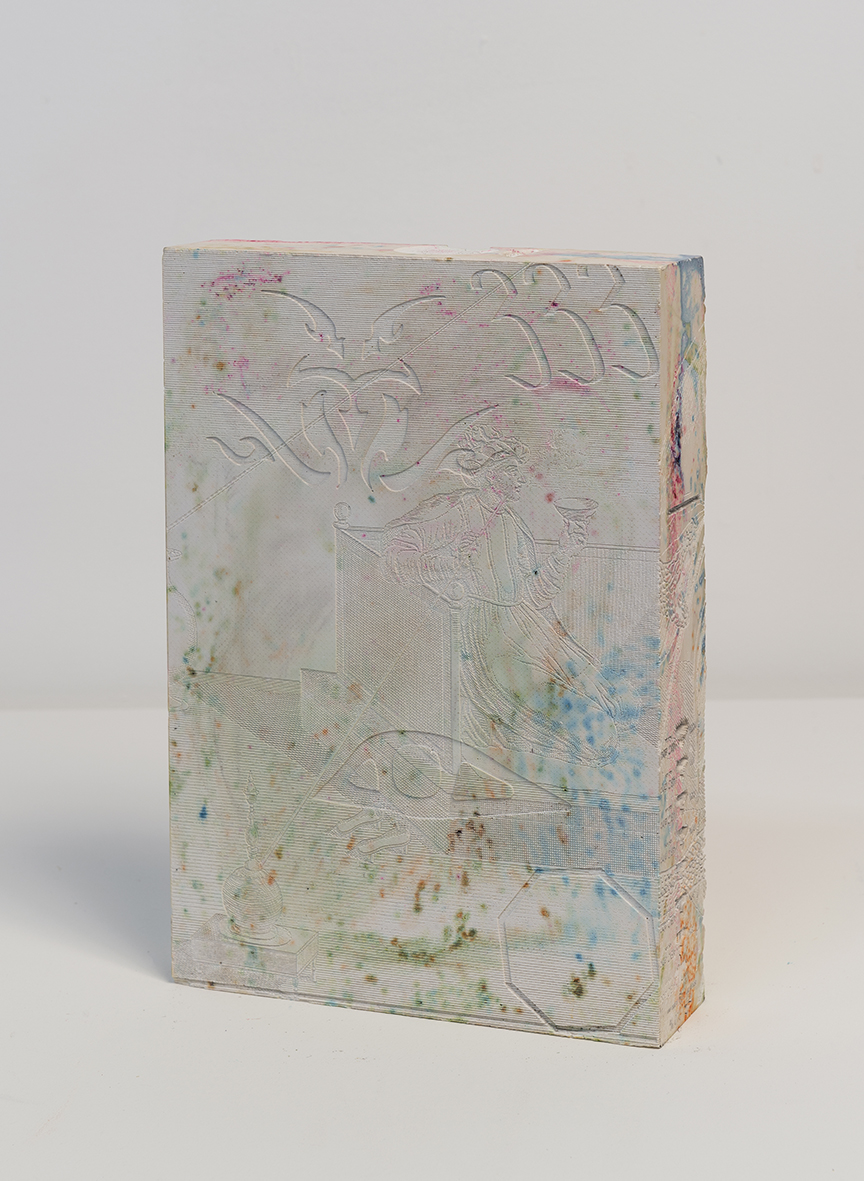
Gaëlle Choisne, Les mémoires akashiques 333, 2021. Résine acrylique (friendly for the earth), pigments alimentaires, gravure laser, 25 x 17 cm. Unique. © Marc Domage. |

Gaëlle Choisne, Les mémoires akashiques 777, 2021. Résine acrylique (friendly for the earth), pigments alimentaires, gravure laser, 25 x 17 cm. Unique. © Marc Domage. |

Gaëlle Choisne, Les mémoires akashiques 999, 2021. Résine acrylique (friendly for the earth), pigments alimentaires, gravure laser, 25 x 17 cm. Unique. © Marc Domage. |
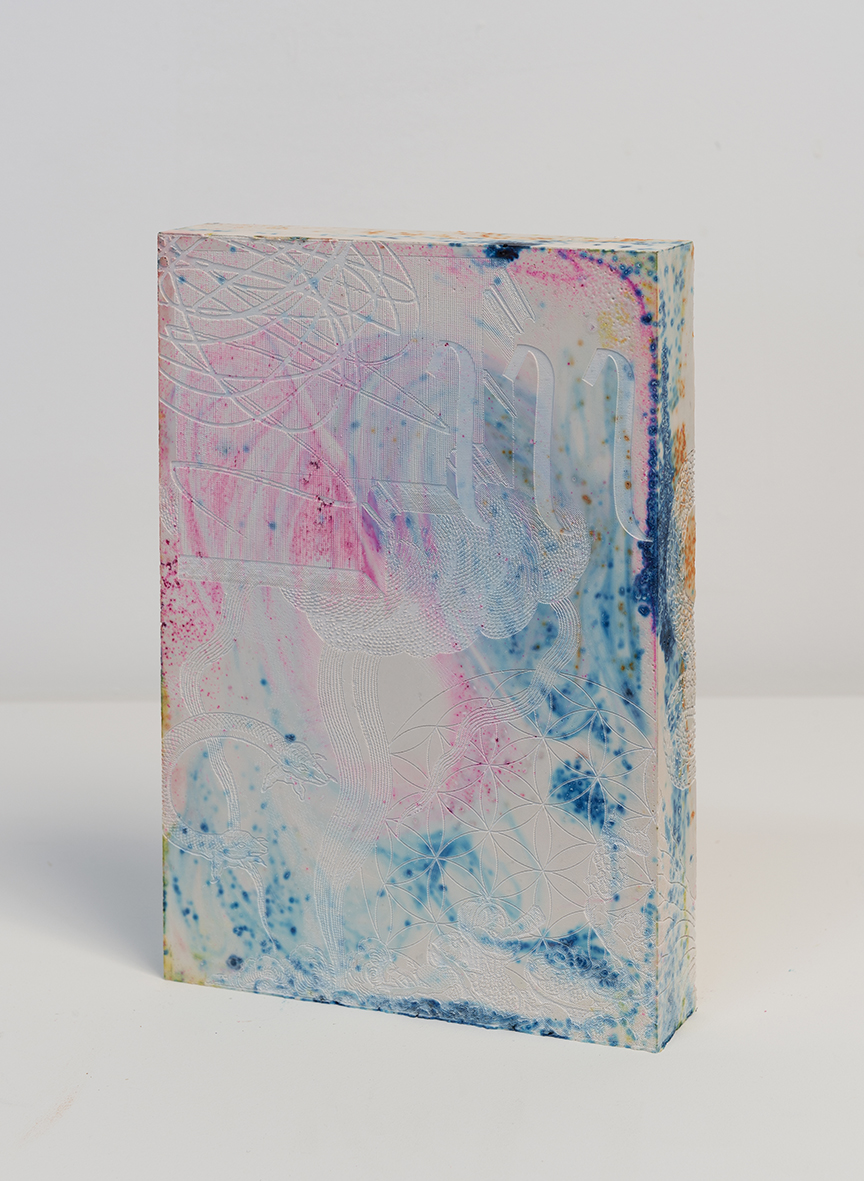
Gaëlle Choisne, Les mémoires akashiques 111, 2021. Acrilyc resin (friendly for the earth), food pigments, laser engraving, 25 x 17 cm. Unique. © Marc Domage. |

Gaëlle Choisne, Still I'll rise, 2021. Laser engraving of a poem by Maya Angelou on 27 seashells, anti-rust paint on metal, plaster, pigments and sisal, dimensions variable. Unique. © Marc Domage. |
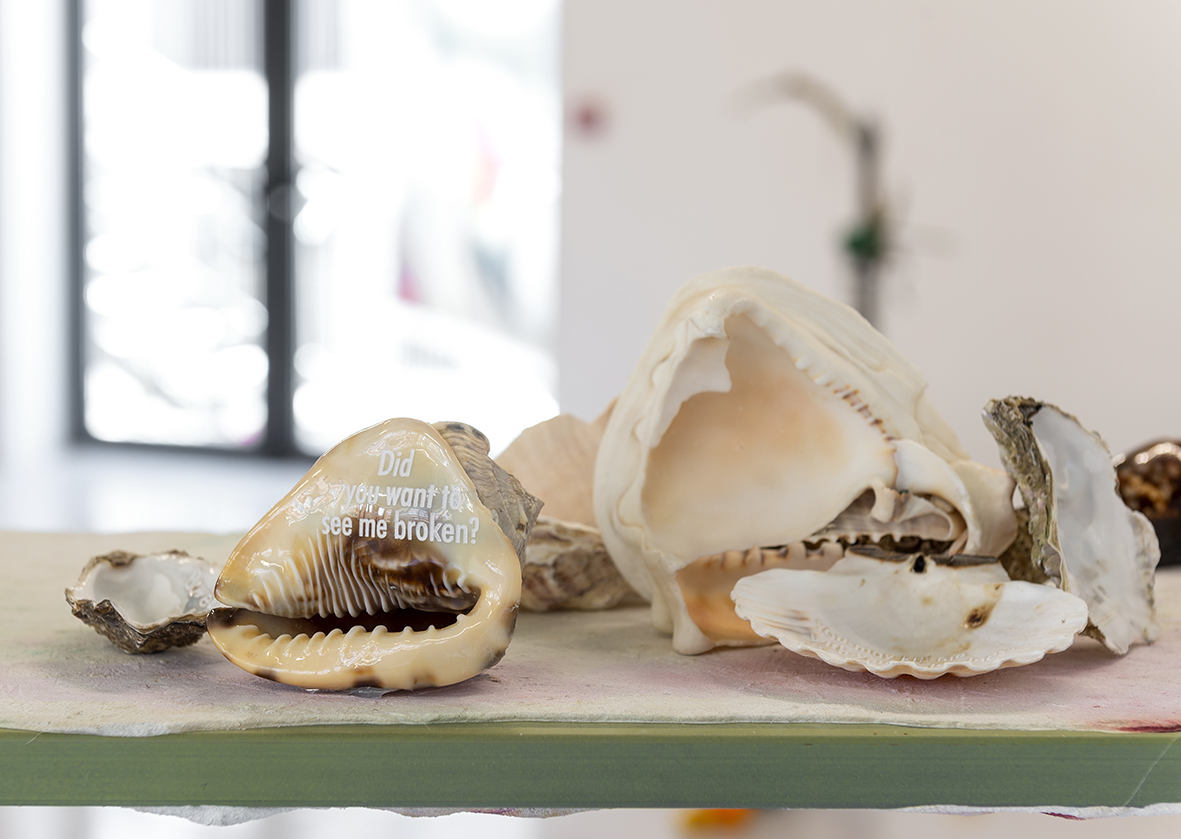
Gaëlle Choisne, Still I'll rise, 2021. Laser engraving of a poem by Maya Angelou on 27 seashells, anti-rust paint on metal, plaster, pigments and sisal, dimensions variable. Unique. © Marc Domage. |
______
Air de Paris remercie Émilie Notéris, Rebecca Lamarche-Vadel et Simon Gérard (Lafayette Anticipations).
All images © All rights reserved. Courtesy the artist and Air de Paris, Romainville.